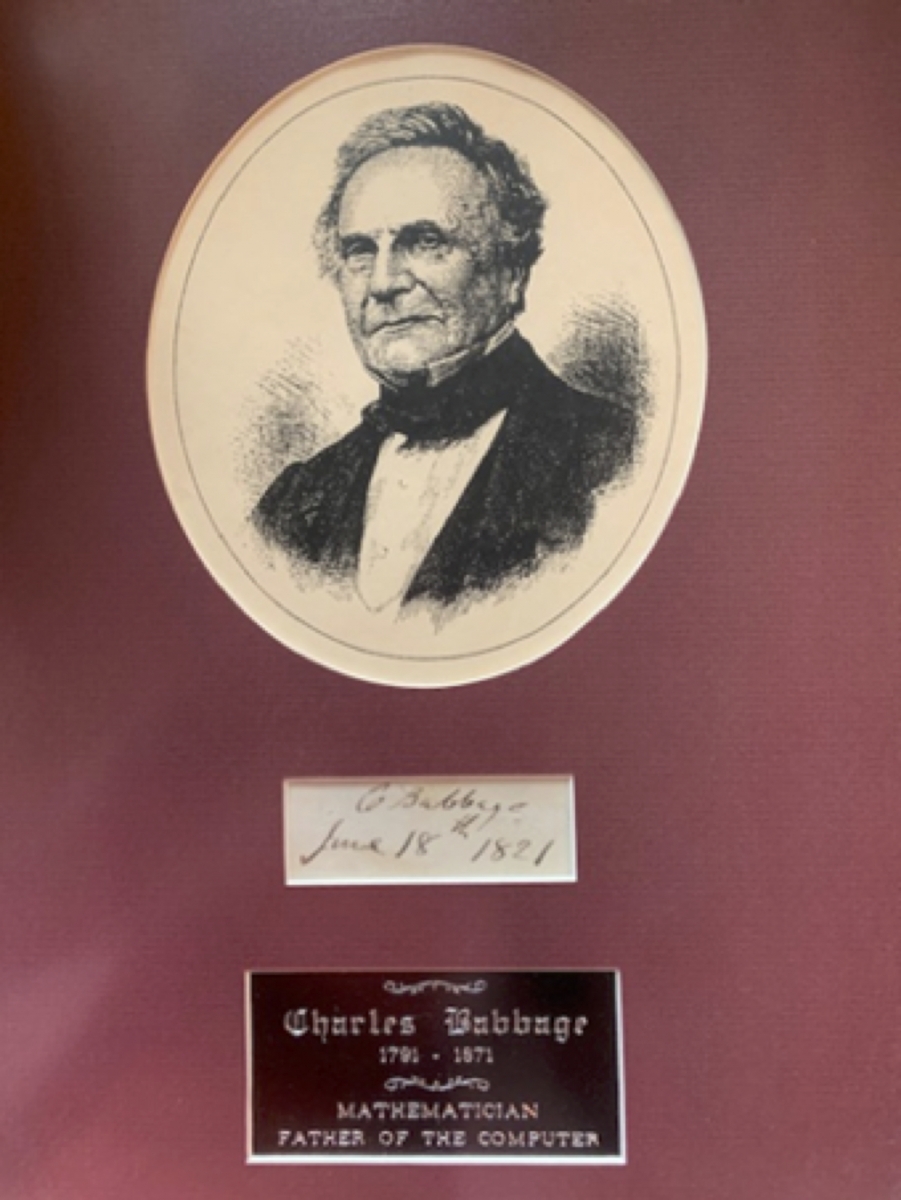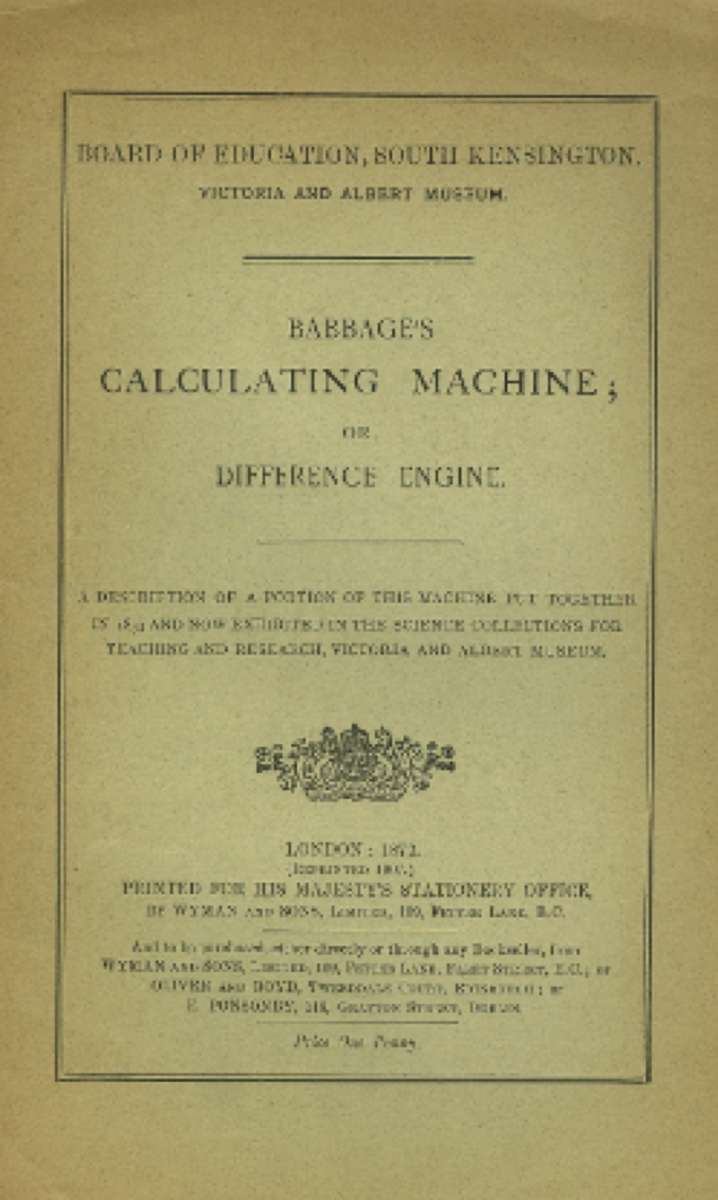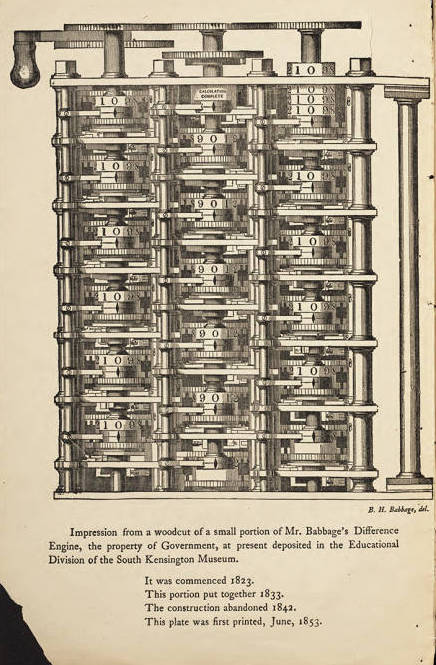- About MAA
- Membership
- MAA Publications
- Periodicals
- Blogs
- MAA Book Series
- MAA Press (an imprint of the AMS)
- MAA Notes
- MAA Reviews
- Mathematical Communication
- Information for Libraries
- Author Resources
- Advertise with MAA
- Meetings
- Competitions
- Programs
- Communities
- MAA Sections
- SIGMAA
- MAA Connect
- Students
- MAA Awards
- Awards Booklets
- Writing Awards
- Teaching Awards
- Service Awards
- Research Awards
- Lecture Awards
- Putnam Competition Individual and Team Winners
- D. E. Shaw Group AMC 8 Awards & Certificates
- Maryam Mirzakhani AMC 10 A Awards & Certificates
- Two Sigma AMC 10 B Awards & Certificates
- Jane Street AMC 12 A Awards & Certificates
- Akamai AMC 12 B Awards & Certificates
- High School Teachers
- News
You are here
Mathematical Treasure: Babbage’s Autograph and Calculating Machine
The interests of Charles Babbage (1791–1871) included mathematics, philosophy, and mechanical engineering. Despite his talents and achievements, including helping found the informal Analytical Society (1812) as well as the professional Royal Astronomical Society (1820) and Statistical Society (1834), his paid employment was erratic before he was named Lucasian Professor of Mathematics (the chair held by Isaac Newton) at the University of Cambridge in 1828.
As with Colin Maclaurin, signatures by Babbage have been collected from letters and documents. The example on this plaque in the author’s collection reads:
C. Babbage
June 18th, 1821
The portrait accompanying the autograph is based on a drawing by Thomas Dewell Scott (1828–1911) made from a photograph taken in July 1860 in London during the Fourth International Statistical Conference. An engraving of Scott’s drawing appeared in the 4 November 1871 Illustrated London News with an obituary of Babbage.

Babbage is probably most widely remembered for his efforts to design a mechanical computer. In Victorian England printed mathematical tables were calculated by hand and thus were prone to errors. Babbage observed this unreliability and saw an opportunity for using a programmable mechanical device to calculate reliable mathematical tables.
In 1822 he began work on a difference engine, made to compute values of polynomial functions via the method of successive differences, which requires only subtraction and addition. Babbage repeatedly modified what he called his "first difference engine," but it remained unfinished. The completed portion is housed today at the Science Museum in London.
From 1847 to 1849, Babbage prepared drawings for a projected “Difference Engine No. 2,” but he did not receive funding from the British government to construct it. His design was finally constructed between 1989 and 1991, using his original plans. At the Science Museum, it returned a calculation accurate to 31 digits.
The author owns the pamphlet whose cover appears below left, which was written by Babbage’s oldest son. It was sold for one penny in 1872 as a visitor’s guide to the Victoria and Albert Museum, where the portion of the Difference Engine put together in 1833 was “now exhibited in the science collections for teaching and research.” The frontispiece (below right) showed a portion of the workings. The Linda Hall Library has digitized another 1872 printing of this description of the calculating machine.


References
Babbage, Benjamin Herschel. Babbage’s Calculating Machine or Difference Engine. London, 1872.
“Charles Babbage.” Wikipedia. https://en.wikipedia.org/wiki/Charles_Babbage.
“Charles Babbage.” Encyclopaedia Britannica. Last revised 22 December 2019. https://www.britannica.com/biography/Charles-Babbage.
O'Connor, J. J., and E. F. Robertson. “Charles Babbage.” MacTutor History of Mathematics Archive, October 1998. https://mathshistory.st-andrews.ac.uk/Biographies/Babbage/.
Sidney J. Kolpas (Delaware County Community College), "Mathematical Treasure: Babbage’s Autograph and Calculating Machine," Convergence (October 2020)




